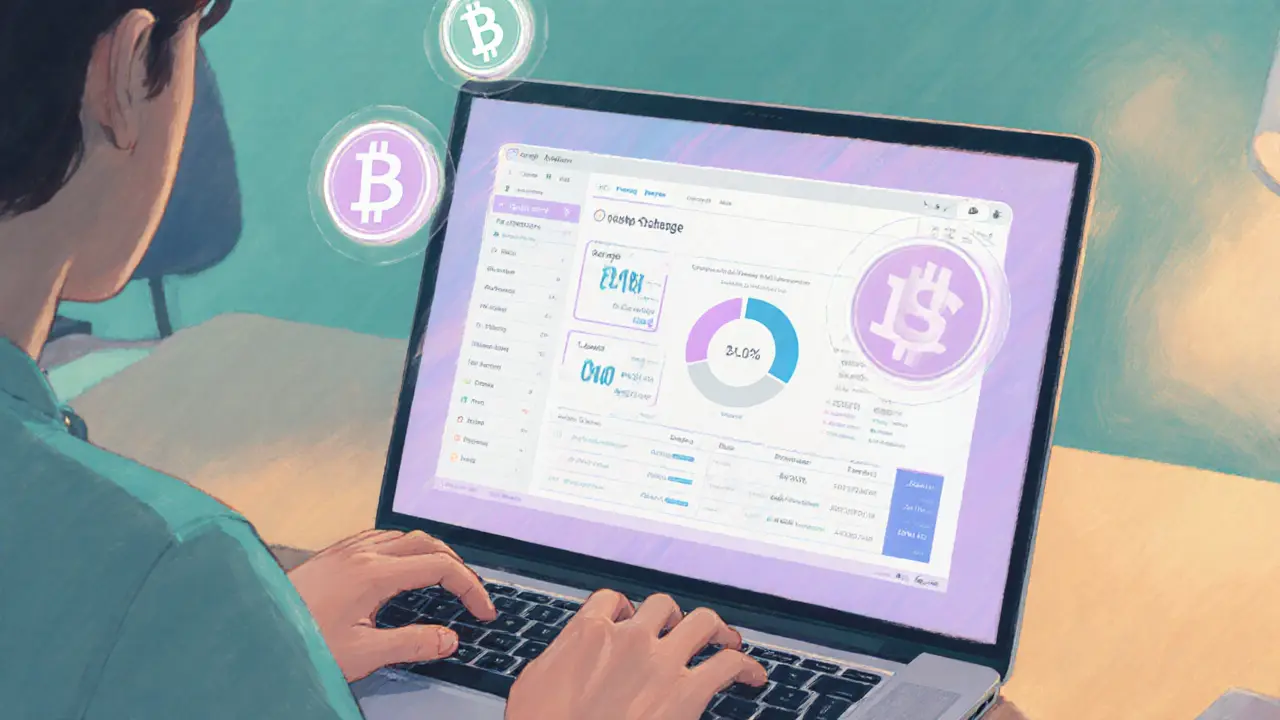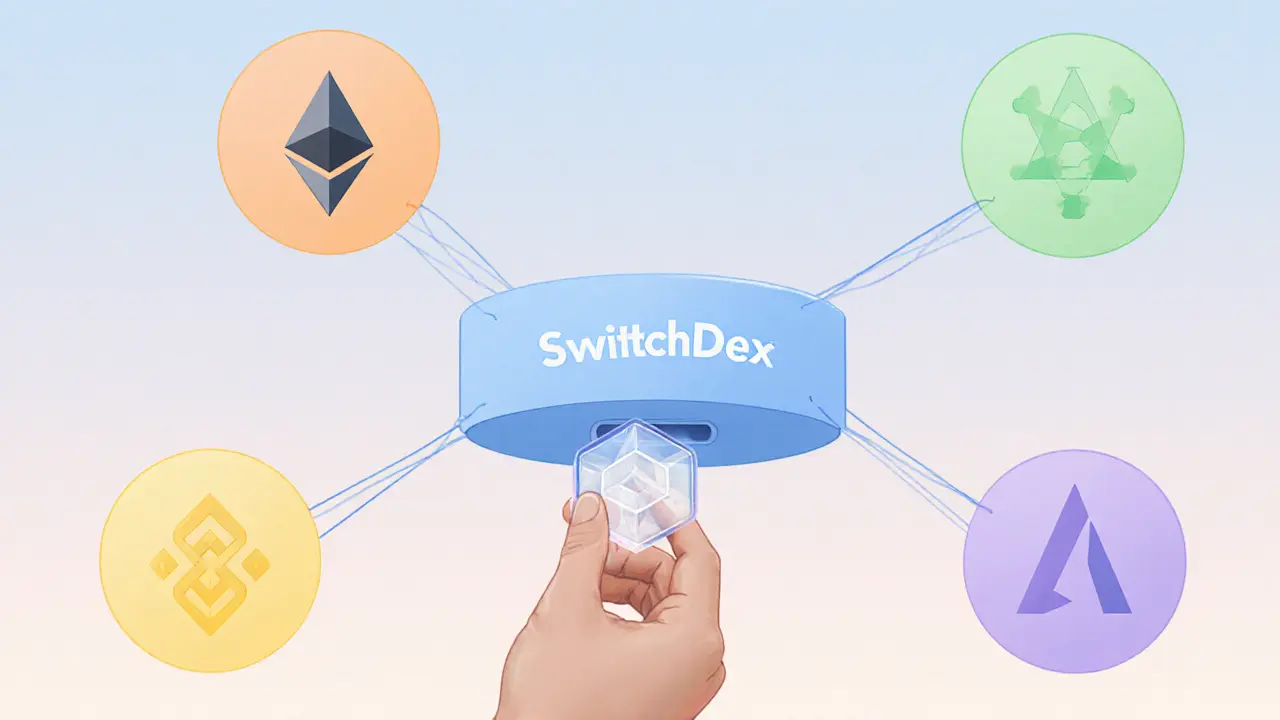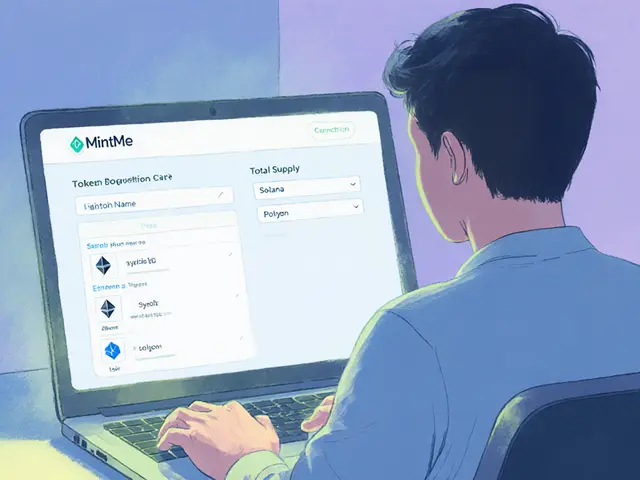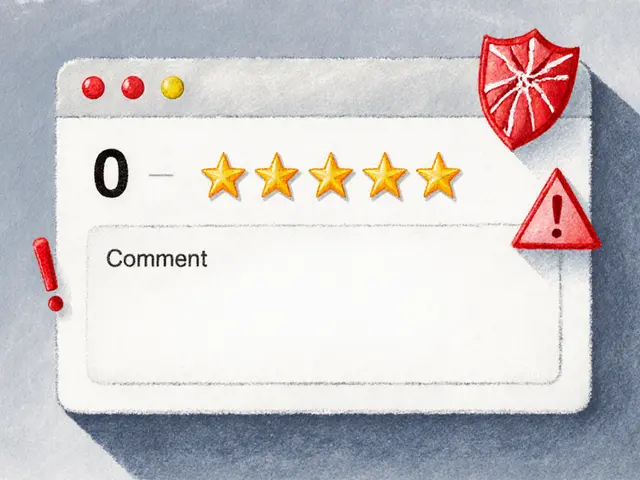SwitchDex Crypto Exchange Review 2025 - Features, Fees & Safety

SwitchDex Fee Calculator
Estimated Fees Breakdown
Protocol Fee
$0.00
(0.15% or 0.05%)Liquidity Provider Fee
$0.00
(0.05% of swap)Bridge Fee (Cross-chain)
$0.00
(0.02% of amount)Key Takeaways
- SwitchDex review: a brand‑new DEX with limited public data, promising low fees and cross‑chain swaps.
- Liquidity and TVL are still modest compared with giants like Uniswap or PancakeSwap.
- Security relies on an audited smart‑contract suite, but the audit is recent and not yet widely vetted.
- Interface is clean, geared toward both beginners and experienced traders.
- Best for users interested in early‑access platforms and experimental token pairs.
When you hear the name SwitchDex is a decentralized exchange (DEX) that launched in early 2025, aiming to provide cheap, fast swaps across multiple blockchains. Because the platform is still emerging, data such as total value locked (TVL) and daily volume are sparse, but the team has released a whitepaper that outlines core features, fee structures, and security measures.
What Sets SwitchDex Apart?
Most DEXs you encounter today-Uniswap on Ethereum, PancakeSwap on the Binance Smart Chain, or SushiSwap on multiple chains-focus on deep liquidity pools for well‑known tokens. SwitchDex tries to fill a niche:
- Cross‑chain aggregation: Users can trade assets from Ethereum, BSC, Polygon, and Avalanche without leaving the UI.
- Dynamic fee model: Base fee is 0.15% per swap, but it drops to 0.05% for high‑volume traders.
- Built‑in limit orders: Unlike many DEXs that only support market swaps, SwitchDex offers limit order functionality via a separate smart‑contract layer.
- Community‑driven token listings: Anyone can propose a new token; the community votes, and if the proposal reaches a quorum, the token is added to the liquidity router.
Core Technical Specs
Below is a quick rundown of the technical building blocks that power SwitchDex.
- Smart contract architecture is written in Solidity 0.8.23 and uses an upgradable proxy pattern to allow future upgrades without user migration.
- Gas optimization techniques cut average transaction costs on Ethereum by roughly 20% compared with typical Uniswap V3 swaps.
- The platform’s security audit was performed by CertiK in March 2025, covering both the core router and the limit‑order module.
- Liquidity providers earn a 0.05% protocol fee plus an optional reward token, SWDX, which is minted at a rate of 2% of swap volume.
- Cross‑chain bridges are powered by LayerZero, ensuring fast finality and low bridge fees.
How Does SwitchDex Compare to Established DEXs?
| Exchange | Launch Year | Primary Chain(s) | Approx. TVL | Average Swap Fee | Unique Feature |
|---|---|---|---|---|---|
| SwitchDex | 2025 | Ethereum, BSC, Polygon, Avalanche | ~$45million (estimated) | 0.15% (drops to 0.05% for high volume) | Native limit‑order smart contract |
| Uniswap | 2018 | Ethereum, Optimism, Arbitrum | $4billion+ | 0.30% (V3) | Concentrated liquidity pools |
| PancakeSwap | 2020 | Binance Smart Chain | $2billion+ | 0.20% | Integrated launchpad & lottery |
| SushiSwap | 2020 | Ethereum, BSC, Polygon, Fantom | $400million | 0.25% | Kashi lending & Bentobox vaults |
User Experience - Is the Interface Friendly?
The UI follows a minimal‑design philosophy. When you first land on the dashboard, you see three main tabs: Swap, Liquidity, and Orders. The swap screen lets you choose any supported token on the drop‑down, and the platform auto‑detects the best route across its cross‑chain routers.
- Swap speed: Typical confirmation times are under 30 seconds on Ethereum, thanks to gas‑saving techniques.
- Order book: The limit‑order tab displays open orders, filled percentages, and a simple “Cancel” button-something rare on DEXs.
- Mobile support: A responsive design works well on iOS and Android browsers; there is also a lightweight React‑Native wrapper for power users.
For newcomers, the platform offers a short tutorial that walks you through connecting a wallet (MetaMask, Trust Wallet, or Coinbase Wallet) and performing a first swap. No KYC is required, staying true to the decentralized ethos.

Security Overview - Can You Trust SwitchDex?
Security is the biggest question for any new DEX. Here’s what we know about SwitchDex’s safeguards:
- Audit report: CertiK’s audit (PDF, 78 pages) flags no critical vulnerabilities; a few medium‑risk items were mitigated via code changes.
- Bug bounty: The team runs a $250k bounty program on Immunefi, rewarding disclosures up to $20k for high‑impact bugs.
- Insurance pool: 1% of all swap fees are funneled into a community‑managed insurance fund that can reimburse users in case of a smart‑contract exploit.
- Multi‑sig governance: Contract upgrades require signatures from three of five core team members, plus a 48‑hour community voting window.
While the audit and bounty program are promising, the platform’s short track record means it hasn’t survived a real‑world attack yet. Traders should start with modest amounts and watch for any unusual contract behavior.
Fee Structure - How Much Does It Cost?
Fees on SwitchDex break down into three components:
- Protocol fee: 0.15% on every swap (variable discount for high‑volume users).
- Liquidity provider fee: 0.05% that goes directly to LPs, plus optional SWDX rewards.
- Bridge fee: When moving assets across chains, LayerZero charges roughly 0.02% of the transferred amount.
Compared with Uniswap’s flat 0.30% fee and PancakeSwap’s 0.20% fee, SwitchDex’s base fee is lower, especially when you qualify for the volume discount.
Who Should Consider Using SwitchDex?
If you fit into one of these buckets, SwitchDex might be worth a try:
- Early adopters who like to experiment with new platforms and earn additional SWDX tokens.
- Cross‑chain traders who need to swap between Ethereum and BSC without using a separate bridge.
- Liquidity providers seeking a fresh pool with potentially higher APYs due to lower initial competition.
- Developers looking for a DEX with an open‑source router that can be integrated into custom dApps.
Conversely, if you handle large, institutional‑scale trades, you might stick with deeper liquidity venues like Uniswap or Curve until SwitchDex builds more depth.
Potential Pitfalls & Red Flags
- Limited TVL: Low liquidity can cause slippage on big orders.
- Newness: The platform hasn’t been battle‑tested under market stress.
- Smart‑contract complexity: The limit‑order module adds extra code that could harbor hidden bugs.
- Community size: As of October 2025, the Discord has ~1,200 members, which is tiny compared to Uniswap’s 200k‑plus community.
How to Get Started on SwitchDex
- Visit switchdex.io and click “Connect Wallet”.
- Select your preferred wallet (MetaMask, Trust Wallet, or Coinbase Wallet).
- Approve the token you want to swap; the UI will show the estimated gas cost.
- Confirm the transaction in your wallet. The swap should settle in under a minute.
- If you want to provide liquidity, navigate to the “Liquidity” tab, choose a pool, and deposit equal values of the two tokens.
Remember to keep a small amount of the native chain token (ETH, BNB, etc.) in your wallet to cover gas fees.
Frequently Asked Questions
What blockchains does SwitchDex support?
SwitchDex currently operates on Ethereum, Binance Smart Chain, Polygon, and Avalanche. The roadmap mentions adding Solana and Terra by the end of 2026.
Is there a native token for SwitchDex?
Yes, the platform’s utility token is SWDX. Holders can earn fee rebates and participate in governance votes.
How safe is the SwitchDex smart contract?
The core contracts were audited by CertiK in March 2025 with no critical findings. The team also runs a $250k bug‑bounty program, but as with any new code, users should start with modest amounts.
Can I place limit orders on SwitchDex?
Yes. SwitchDex offers a built‑in limit‑order module. You set a price, the contract holds your funds, and the order executes automatically when the market hits your target.
What are the fees compared to Uniswap?
SwitchDex charges a base 0.15% protocol fee (dropping to 0.05% for high volume), whereas Uniswap V3 typically uses a 0.30% fee. Bridge fees add an extra ~0.02% when moving assets between chains.








The fee calculator layout is clean and straightforward, making it easy to input swap amounts and see the estimated costs without any unnecessary clutter.
The fee structure is fundamentally flawed; the hidden bridge fee and variable protocol charge make the advertised 0.15% seem like a bait‑and‑switch, and the lack of transparency about network congestion costs only adds to the problem.
Looks like a decent tool!
Honestly the platform simply cannot compete with home‑grown solutions that respect local regulations and prioritize user sovereignty; any exchange that skirts strong compliance will eventually crumble under scrutiny.
i like the simple design it feels like a quick glance can tell you most things without diving deep into tiny menus
In the grand tapestry of decentralized finance, tools like this serve as modest threads that nonetheless bind the fabric together; the elegance of its minimalism invites contemplation about the very nature of cost and value in digital economies.
When evaluating SwitchDex, it’s important to consider not only the headline fee percentages but also the broader ecosystem impact, which includes liquidity depth, cross‑chain bridge reliability, and user experience design. The fee calculator itself is an excellent entry point, allowing traders to model expenses before committing capital, thereby reducing unexpected slippage. Moreover, the tiered volume discounts reward high‑frequency operators, encouraging market making and tighter spreads. The protocol fee, though modest at 0.15% for regular users, scales down to 0.05% for high‑volume participants, reflecting a thoughtful balance between sustainability and competitiveness. Liquidity provider fees are transparently disclosed at 0.05% of the swap, which is in line with many DeFi aggregators. Bridge fees of 0.02% may appear trivial, yet they can compound on larger transfers, especially when moving assets across congested networks. The UI emphasizes clarity, with real‑time updates that prevent the need for manual calculations, a small but significant usability win. Security-wise, SwitchDex leverages audited smart contracts and a multi‑signature governance model, mitigating single‑point failures and fostering community trust. While no platform is immune to risk, the combination of fee transparency, tiered incentives, and robust security protocols positions SwitchDex as a compelling option for both novices and seasoned traders. In practice, many users report smoother transaction confirmations compared to legacy centralized exchanges, thanks to the platform’s adaptive gas fee estimation mechanisms. Finally, the ongoing community governance process ensures that fee structures can evolve in response to market dynamics, keeping the platform relevant in the fast‑moving crypto landscape.
While the preceding exposition is thorough, one must acknowledge that the purported advantages are contingent upon an idealized market environment; any deviation in network latency or token volatility may render the fee model suboptimal.
Hey folks, if you’re looking for a quick way to compare costs before you trade, definitely give this calculator a spin – it’s super handy and keeps the hassle low.
It’s not that great; you can find cheaper options elsewhere.
Balancing fee transparency with platform security is key, and SwitchDex appears to be making a genuine effort to strike that equilibrium, which should reassure both casual users and institutional participants.
Exactly! The open‑source audit reports 📄 and the community‑driven governance 🗳️ provide the extra layer of confidence many traders seek. Plus, the fee breakdown is instantly visible, which helps with budgeting and risk management. 😊
From a systems‑architecture perspective, the modular bridge integration introduces latency variables that could affect throughput, so any assessment must factor in the stochastic nature of cross‑chain messaging.